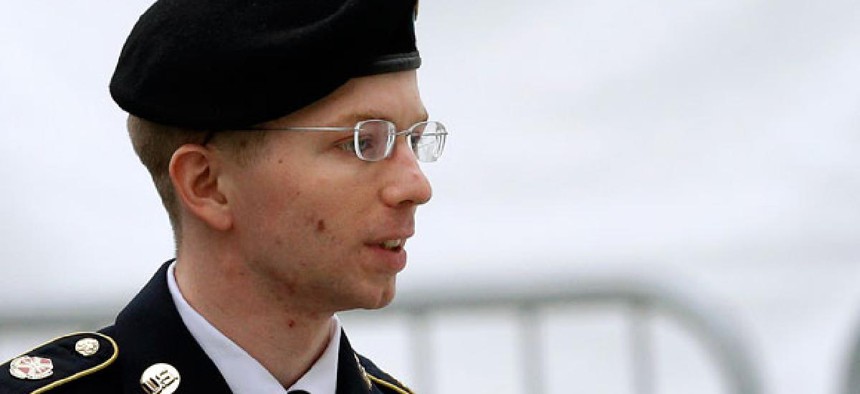
Army Pfc. Bradley Manning Patrick Semansky/AP File Photo
First Day of Bradley Manning's Trial: Linking Him to Bin Laden
A confused kid or a man hoping to undermine the war in Iraq?
On the first day of the trial of Bradley Manning, the Army private accused of aiding enemies of the United States by transmitting classified documents to Wikileaks, attorneys did their best to shape perceptions. The judge hearing the case was offered two views of the defendant. One was of a mixed-up kid trying to make the world a better place. The other was a portrait of a man hoping to undermine the United States' war in Iraq by sharing information with al Qaeda — and, indirectly, with Osama bin Laden himself.
The key word on that last point is "indirectly." It's been known for a while that the government's attempt to prove that Manning's leaks were damaging — an important component of the its case — would include an effort to draw a line between Manning and bin Laden. In February, we outlined how that would work. In short: bin Laden, during his Internet-free Abbottabad tenure, asked for and received documents from the Manning Wikileaks dump on digital media. When the Navy raided bin Laden's compound, they found that media, which eventually made its way back to the FBI's headquarters in Quantico. Demonstrating the full chain of evidence back to bin Laden isn't easy, prompting the government to suggest it would call one of the Navy SEALs to testify about finding the unidentified device.
It's worth noting that the government leaked its desire to call the SEAL prior to Manning acquiescing to forego the right to a jury trial. In other words, the government wanted to call the SEAL — an obviously high-wattage witness — back when it thought that the case would be heard by military jurors, not a single judge. Whether or not they still plan to use him isn't known; the 140-odd witnesses the government plans to call will be unveiled in sets of 25.







